If you can’t deadlift weight, don’t worry! With these 7 deadlift alternatives, you’ll be able to lift heavy weight without feeling pain. deadlift is one of the most important movements in bodybuilding and powerlifting, but if you struggle with lifting weight, this list of deadlift alternatives will help you out. deadlift is a compound exercise that involves the use of both the lower- and upper-body muscles. By performing deadlift variations, you’ll be training your entire body to work efficiently and effectively. So start lifting today and see how much better your workouts will become!
What is Deadlift?
A deadlift is a weightlifting exercise in which a barbell or dumbbell is lifted from the ground to the level of the hips, then returned to the ground. The deadlift is one of the three powerlifting events, along with the squat and bench press.
The deadlift exercise was first described in detail in a book published in 1898 by German strength athlete Siegmund Breitbart. In his book, Breitbart advocated using a wide grip and lifting the weight as quickly as possible.
The deadlift exercise works many different muscles in your upper and lower body, including your Quadriceps, Hamstrings, Glutes, Back Muscles, and Shoulder Muscles. The deadlift is an excellent exercise for overall strength and muscle development.
Today, there are two main types of deadlifts: conventional and sumo. In the conventional deadlift, the feet are about hip-width apart and the hands are placed outside of the knees. In the sumo deadlift, the feet are placed very wide, almost twice shoulder-width apart, and the hands are placed inside of the knees.
Benefits of Deadlift
The deadlift is an excellent compound exercise that offers a host of benefits. Here are the top 5 benefits of the deadlift:
Building Overall Strength
The deadlift is a compound exercise that works multiple muscle groups at once, making it a great exercise for building overall strength. The main muscles worked are the quadriceps, hamstrings, and glutes, but the deadlift also recruits the muscles of the back, shoulders, and arms to a lesser extent. Because the deadlift works so many muscles simultaneously, it is an excellent exercise for increasing both muscular strength and size. Additionally, because the deadlift is a functional movement that mimics activities like picking up a heavy object from the ground, it can help to improve your everyday functional strength as well.
Posterior Chain Muscles
The deadlift is an excellent exercise for developing the posterior chain muscles, which are responsible for much of our power and explosiveness.
The deadlift is an excellent exercise for developing the posterior chain muscles. The muscles of the posterior chain include the glutes, hamstrings, and erector spinae. The deadlift works all of these muscles simultaneously, making it an incredibly effective exercise for building strength and muscle mass in the posterior chain. If you want to build strength and muscle in your posterior chain, the deadlift is the perfect exercise for you.
Strengthening Muscles and Build Stronger Spine
The deadlift can help improve our posture and prevent back pain by strengthening the muscles that support our spine. The deadlift is an excellent exercise for those looking to improve their posture and prevent back pain. This is because the deadlift strengthens the muscles that support our spine, including the erector spinae and glutes. Additionally, the act of pulling weight from the ground forces us to maintain a neutral spine, which helps train our body to maintain good posture. Start with lighter weights and perfect your form before progressing to heavier loads.
Build grip Strength and Forearm Size
If you’re looking for a way to build grip strength and forearm size, look no further than the deadlift. This popular exercise is a great way to improve your grip strength, as well as your overall strength and size.
Here’s why the deadlift is such a great exercise for your forearms:
It forces you to use your fingers and thumbs to grip the barbell, which strengthens these muscles.
The heavy weight of the barbell also challenges your forearm muscles, causing them to grow larger.
Deadlifts also improve your grip endurance, so you’ll be able to hold on to things for longer periods of time.
So if you’re looking for a way to boost your forearm strength and size, make sure to add deadlifts to your workout routine.
Leading to Better Fat Burning and Muscle Growth
The deadlift is an essential exercise for overall fitness and can help increase our metabolic rate.
Our metabolic rate is the amount of energy we expend each day and is determined by a number of factors, including our age, weight, activity level, and diet.
The deadlift can help increase our metabolic rate by helping us to build muscle, which in turn helps to boost our metabolism. Additionally, the deadlift works a large number of muscles at once, which also helps to increase our metabolic rate.
By increasing our metabolic rate, we can burn more calories each day and lose weight or keep it off more easily. Additionally, a higher metabolism can help us to maintain energy levels and avoid fatigue throughout the day.
7 Great Deadlift Alternatives
There are a lot of people out there who think that the deadlift is the be-all and end-all of lifting exercises. However, there are plenty of other exercises that can give you a great workout without putting all of the strain on your back that the deadlift does. Here are 7 great alternatives to the deadlift that will still give you a killer workout.
#1 Glute Bridge
The Glute bridge is a great alternative to the deadlift for people who are looking to target their glutes. The Glute bridge is a compound movement that works not only the glutes, but also the hamstrings and core. The Glute bridge can be performed with just your bodyweight, making it a great exercise for beginners. Here are three benefits of the Glute bridge:
The Glute bridge is a great way to activate your glutes. Many people sit all day long, which can lead to weak and inactive glutes.
The Glute bridge is a great way to get your glutes firing before you start your workout. The Glute bridge is a great exercise for building strength in your posterior chain.
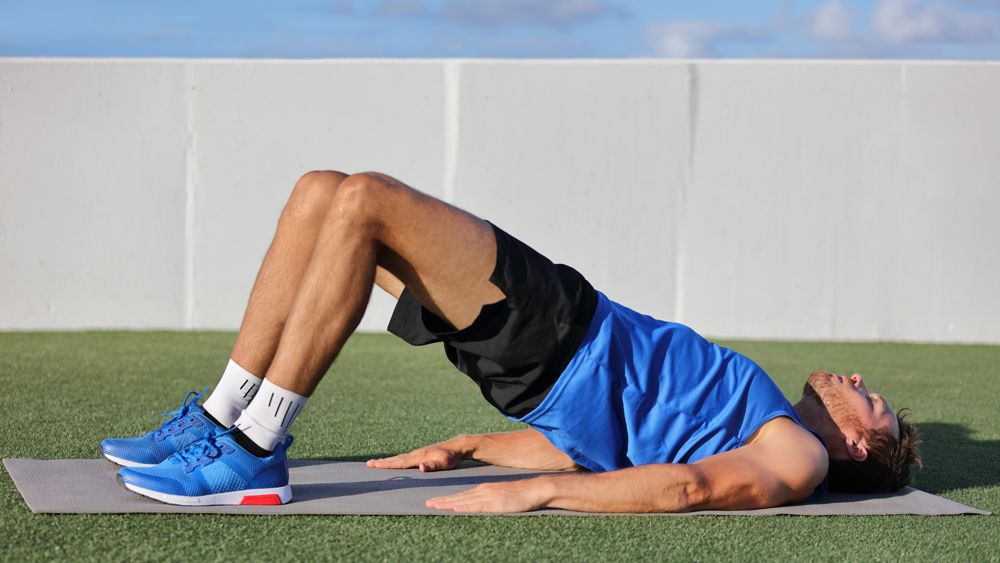
How to do?
Here’s how to do a Glute Bridge:
- Lie flat on your back with feet flat on the ground and shoulder-width apart, legs bent to 90 degrees.
- Drive your heels into the ground, and lift your hips off the ground until your thighs and torso are in line with each other.
- Hold for two seconds, then slowly lower your hips back to the starting position.
- Repeat for 10-12 reps.
Bonus Tip
For an added challenge, try adding weight to the exercise by holding a dumbbell or kettlebell in your hands. You can also place a barbell across your hips for added resistance.
#2 Trap Bar Deadlift
The Trap Bar Deadlift is a great alternative to the traditional deadlift because
–The trap bar deadlift allows you to keep your center of gravity closer to your body, which makes it easier to maintain good form and avoid injury.
–The trap bar deadlift is a more quad-dominant exercise than the traditional deadlift, so it can be a great exercise for those who want to focus on developing their quads.
–The trap bar deadlift can be performed with lighter weights than the traditional deadlift, making it a great option for beginners or those looking to focus on proper form and technique.
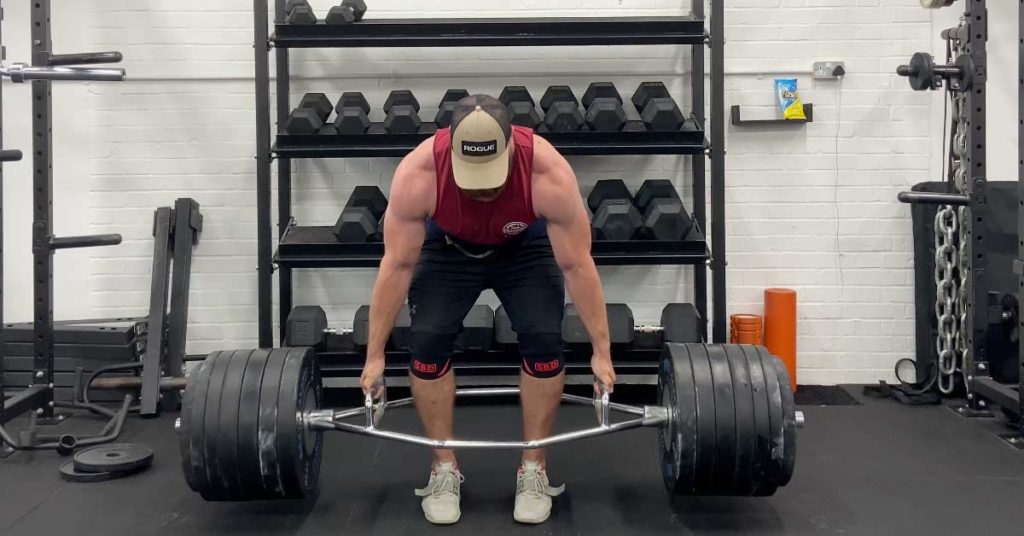
How to do?
If you’re looking for a deadlift alternative that will still give you a great lower body workout, look no further than the trap bar deadlift. Here’s how to do it:
- Start by standing in the middle of the trap bar, with your feet shoulder-width apart.
- Bend down and grasp the bar with an overhand grip, keeping your arms straight.
- Lift the bar up, keeping your back straight and your core engaged, until you’re standing upright.
- Reverse the motion and lower the bar back down to the starting position.
- Repeat for 10-12 reps.
Bonus Tip
Try using a lighter weight than you normally would for traditional deadlifts. This will help you focus on form and technique.
#3 Bent-over Row
The bent-over row is a great alternative to the deadlift for those who are looking to build strength and muscle in their back and legs. This exercise targets the same muscles as the deadlift, but puts less strain on the lower back. The Bent-over Row also helps to improve posture and can be done with a variety of different weights and equipment. Here are some of the benefits of the bent-over row:
–strengthens the same muscles as the deadlift (back, legs, and core)
–Puts less strain on the lower back
–Develops core strength and stability
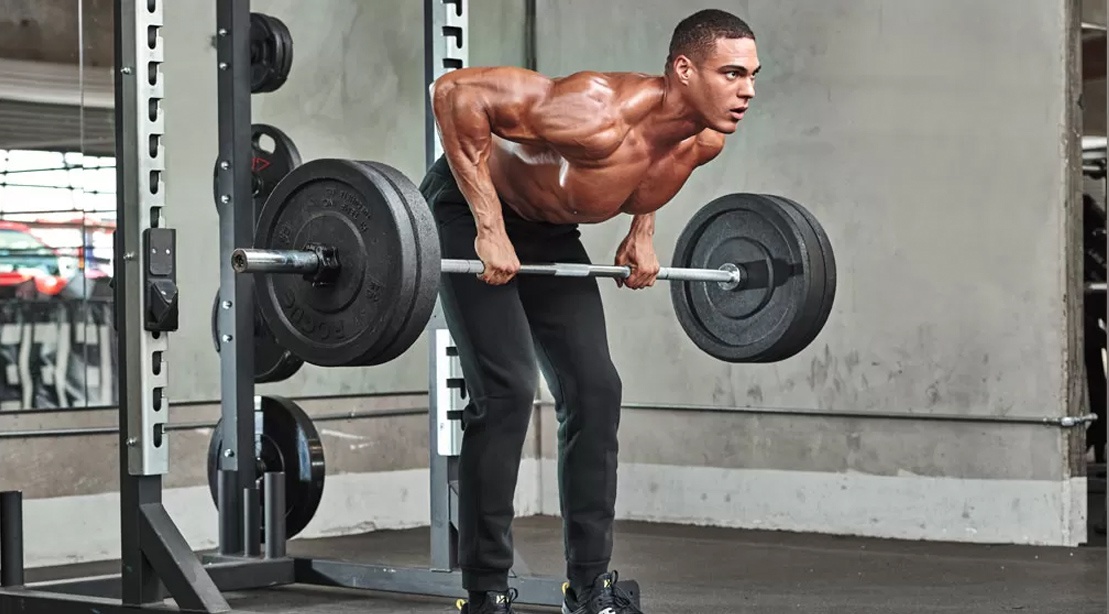
How to do?
This exercise can be done with either a barbell or dumbbell, and can be performed with either a wide or narrow grip.
- To do the Bent-over Row, start by standing with your feet hip-width apart and your knees slightly bent. Bend at the hips and lower your torso until it’s nearly parallel to the ground. Keep your back straight and your core engaged throughout the movement.
- From this position, row the weight up to your chest, keeping your elbows close to your body. Pause for a moment at the top of the move before lowering the weight back down to the starting position.
- Start with a light weight and do 3 sets of 10-12 reps before increasing the weight.
Bonus Tip
Remember to keep your core engaged throughout the entire exercise. This will help to stabilize your body and prevent you from swinging the weight up with momentum. Doing this exercise with strict form will ensure that you’re getting the most out of it and working the muscles in your back effectively.
#4 Single-leg Romanian Deadlift
Another best alternative of deadlift is single-leg Romanian deadlift. It works the same muscles, but because you are using only one leg at a time, it is a bit easier on your back and knees.
Here are some of the benefits of the single-leg Romanian deadlift:
–You can use heavier weights than with a traditional deadlift. This is because you are only lifting one-quarter of your body weight, as opposed to half with a traditional deadlift.
–It is easier on your joints, specifically your back and knees. When you Deadlift with two legs, there is more stress on your spine and knees. By doing the single-leg variation, you can still get all the benefits of the exercise without putting as much stress on your joints.
–It strengthens the muscles in your legs, including your hamstrings, glutes, and quadriceps.
–It is a great exercise for improving your range of motion and flexibility.
–It can help relieve pain in the lower back and hips.
 How to do?
How to do?
This exercise is a great way to build strength and stability in your lower body. Here’s how to do it:
- Start by standing with your feet hip-width apart and holding a dumbbell in your right hand.
- Bend your right knee and raise your left leg behind you so that your left foot is off the ground.
- Keeping your back straight, hinge at the hips and lower the dumbbell toward the floor.
- As you lower the weight, kick your left leg back behind you so that both legs are straight at the bottom of the movement.
- Press through your right heel to stand back up, bringing the dumbbell back to the starting position.
- Do 4 sets of 12-15 reps and gradually increase the weight.
Bonus Tip
Doing this exercise with proper form is key to getting the most out of it. Be sure to keep your back flat throughout the movement and move slowly and controlled – don’t swing the weight up! Start with light weights until you get the hang of the movement, then increase as desired.
#5 Barbell Hip Thrust
The barbell hip thrust is a movement that can be used as an alternative to the deadlift.
There are many benefits to the barbell hip thrust, including increased gluteal muscle activation, improved hip extension strength, and decreased shear force on the spine.
The barbell hip thrust can be performed with a variety of different loads, making it an accessible exercise for a wide range of people.
If you are looking for an exercise to improve your deadlift performance or want to add some variety to your strength training routine, consider giving the barbell hip thrust a try.
How to do?
- Start by sitting on the ground with your back against a bench and a barbell placed across your hips.
- Drive your heels into the ground and thrust your hips up, extending your knees and hips until your thighs are parallel to the ground and your torso is upright.
- Reverse the motion by lowering your hips back down to the starting position under control.
- Repeat for 8-10 repetitions.
This exercise can be made more challenging by adding weight to the barbell, or by performing it with one leg at a time. For an added challenge, try doing this exercise with a band around your knees.
Bonus Tip
When performing the barbell hip thrust, make sure to keep your core engaged throughout the entire movement. This will help stabilize your body and prevent you from arching your back.
#6 Back hyperextension
The hyperextension is a great alternative to the deadlift for those who are looking to work their back muscles. This exercise works the entire back, from the lower to the upper region. It is also effective in strengthening the erector spinae, which is responsible for maintaining good posture. Here are some of the other benefits of this workout:
–It helps improve your flexibility and range of motion.
–It strengthens your core muscles, including your abdominals and obliques.
–It can help relieve back pain by stretching out tight muscles and relieving pressure on the spine.
–It can improve your posture and alleviate symptoms of conditions like scoliosis or kyphosis.
–It can increase your strength and power, making it an ideal exercise for athletes or people who lift weights regularly.
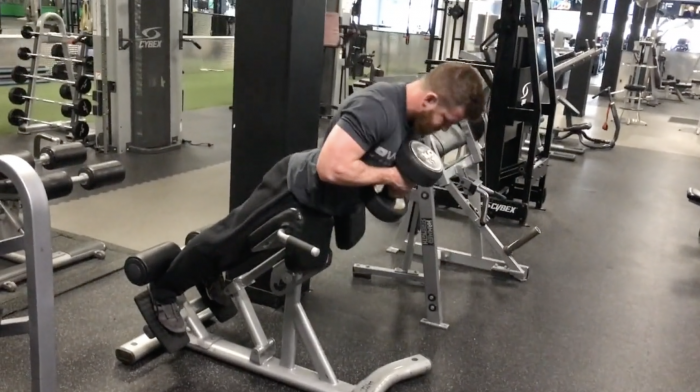
How to do?
Here is a quick guide on how to do a hyperextension workout:
- Start by lying face down on a hyperextension bench with your feet securely locked in place.
- Place your hands behind your head and brace your core muscles.
- Slowly raise your torso up until you reach full extension, then lower yourself back down under control.
- Repeat for 8-12 repetitions.
- For an added challenge, you can hold a weight plate in front of your chest while performing the exercise.
Bonus Tip
When you do this exercise, be sure to keep your hips and knees aligned. This will help you avoid injury and get the most out of the exercise.
#7 Bulgarian split squat
The Bulgarian split squat is a great alternative to the deadlift for people who are looking to improve their lower body strength because:
–The Bulgarian split squat targets the quads, hamstrings, and glutes, which are the major muscles used in the deadlift.
–Unlike the deadlift, the Bulgarian split squat does not put as much stress on the lower back and spine. This makes it a safer exercise for people with lower back pain or injuries.
–The Bulgarian split squat can be done with lighter weights than the deadlift, making it a great option for beginners or those who are new to lifting weights.
–The Bulgarian split squat is a great exercise for improving balance and stability. This can help you avoid injury when lifting heavier weights in the future.
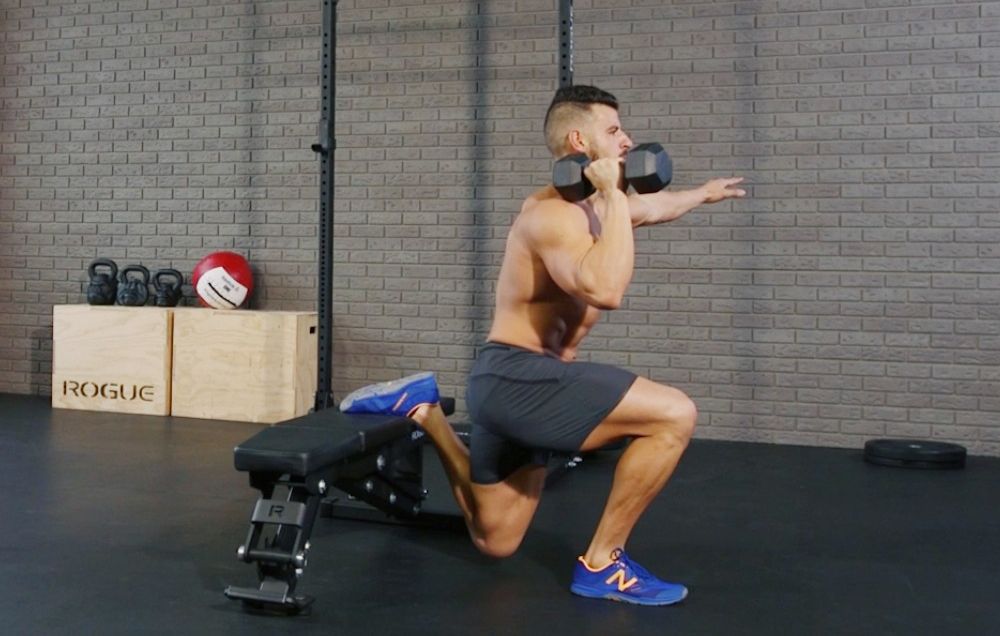
How to do?
Here’s a step-by-step guide on how to do the Bulgarian split squat:
- Start by standing with your feet hip-width apart and holding a dumbbell in each hand. Place your left foot behind you on a bench or chair.
- Keeping your torso upright, lower your body down until your right thigh is parallel to the ground. Make sure your front knee doesn’t extend past your toes.
- Push back up to the starting position and repeat for 8-10 reps before switching legs.
Bonus Tip
When you do this exercise, make sure to keep your chest up and your back straight. This will help you maintain good form and avoid injury.
Words From Sheru Classic
If you’re struggling to deadlift but want to stay strong and healthy, try one of the best deadlift alternatives listed above. All of these exercises will help build muscle without pain and will help you achieve your deadlift goals. Make sure to check back for more great tips on staying fit and healthy.
Answers You Want To Know
- Should I use a weightlifting belt?
When it comes to deadlifting, there is no one-size-fits-all answer. That’s because everyone’s body type and lifting experience is different. Some people who lift without a belt find that they can still achieve great results by using lighter weights and focusing on proper form. If you are serious about training with the deadlift, then wearing a weightlifting belt may be beneficial for safety reasons.
2. What is the best way to warm up for the deadlift?
When it comes to deadlifting, one of the best exercises you can do is by doing some basic bodyweight exercises that will prepare your body and central nervous system. Try performing some Farmer’s Walk, Sprinting, Jumping Rope or Hanging Kettlebell Swings as your warm-up before deadlifting weights.
3. How should I perform the deadlift using proper form?
To perform the deadlift correctly, start by warming up your muscles before starting by doing some light cardio or stretching. Next, make sure to use an Olympic weightlifting belt if you’re not used to performing this type of lift. When it comes to the form of the deadlift, keep your back flat against the bench and pull with your legs until your thighs are at 90 degrees from each other. Make sure to use a grip width that is comfortable for you, as this will affect the range of motion of your deadlift.
4. How can I increase my strength without using a weightlifting bench?
There are a number of ways you can increase your deadlift strength without using a weightlifting bench.
- One option is to use an exercise ball to add resistance. This can be done by starting with a lower weight and increasing the repetitions over time.
- Another way is to perform the lift with a cable machine or suspension trainer. By using these machines, you can increase the range of motion and improve the strength and coordination of your back muscles.
- You can also try practicing the lift at home with lighter weights and increased repetitions over time. This will help you gradually increase your deadlift strength without having to use a weightlifting bench.
5. Can I do single-leg deadlifts instead of the regular deadlift?
You can do single-leg deadlifts instead of the regular deadlift. Single-leg deadlifts are better suited for people who have limited range of motion in their hips and/or quadriceps muscles. They also help build strength in your glutes and a hamstring, which is important because they will be using these muscle groups while deadlifting.
6. What is the best way to strengthen my glutes without using weights?
There are many great ways of strengthening your glutes without using weights, and all of them are easy to do at home. Here are three of the best exercises for glutes:
1. Single Leg Glute Bridge: This is a glute-targeting exercise that uses your body weight to bridge one leg over the other in front of you.
2. Swiss Ball Hamstring Curl: This exercise uses a Swiss ball to target your hamstring muscles and glutes.
3. Glute Bridge with Resistance Bands: This exercise uses resistance bands to help you increase glute strength in a safe and effective manner.
Progress at your own pace by adding more resistance bands as you become stronger.
7. Is it better to focus on compound exercises or isolation exercises when it comes to Deadlifting?
When it comes to deadlifting, it is important to do both compound and isolation exercises regularly. This will help you in building strength and size in all of your muscle groups, without any pain. Compound exercises like Deadlift work multiple muscle groups at the same time, which results in a greater amount of strength and power. In addition, these exercises are typically more efficient in training the muscles than isolation exercises. So, if you’re looking to deadlift pain-free, so make sure to perform both compound and isolation exercises on a regular basis.


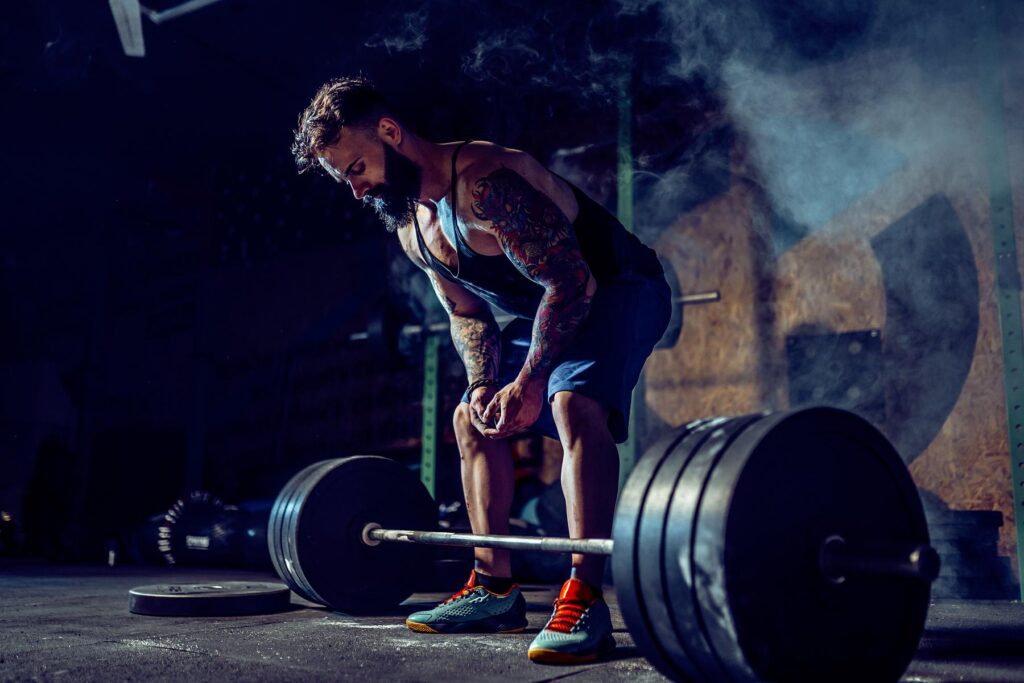
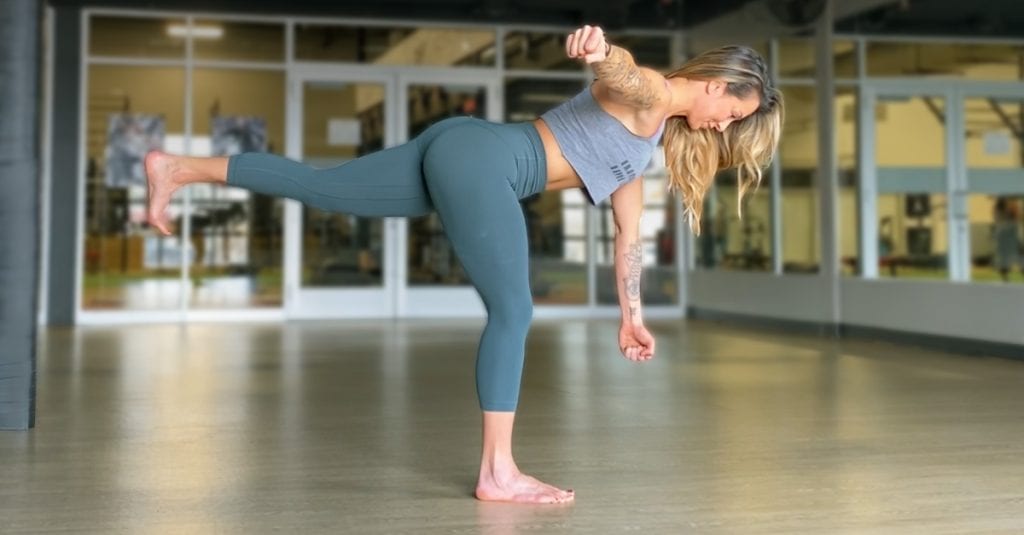 How to do?
How to do?